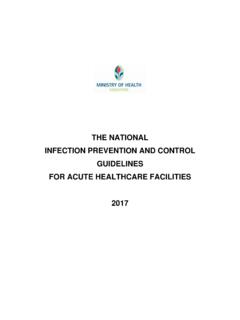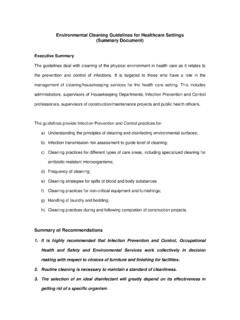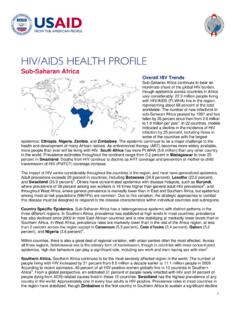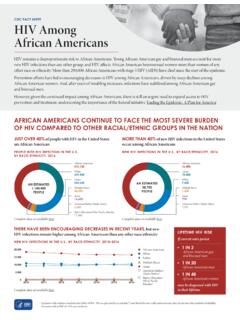Transcription of SINGAPORE BURDEN OF DISEASE STUDY SINGAPORE …
1 SINGAPORE BURDEN OF DISEASE STUDY 2010 SINGAPORE BURDEN OF DISEASE STUDY 2010 COPYRIGHT NOTICES ingapore BURDEN of DISEASE STUDY 2010 ISBN 978-981-07-9564-1 June 2014 All rights reserved. Further reproduction of this material is prohibited without the written permission of the copyright holder. All material contained in this report may be used without special permission. Cited to source, however is citationEpidemiology & DISEASE Control DivisionMinistry of Health, SingaporeApplication for the copyright owner s written permission to reproduce any part of this publication should be addressed to:DirectorEpidemiology & DISEASE Control DivisionMinistry of HealthCollege of Medicine Building16 College RoadSingapore 169854 Republic of SingaporeFax: (65) 6325 9194 Email: usage of sale of this work is prohibited. PrefaceThe SINGAPORE BURDEN of DISEASE (SBoD) STUDY is part of the Ministry of Health s continuing effort to identify the extent and distribution of health problems in SINGAPORE .
2 It measures the BURDEN of diseases and injuries in our resident population using methods developed at the global level by the World Health Organization (WHO) and the World Bank in 1990. This report presents updated findings from the third series of the SBoD STUDY undertaken once every three years. Previous series were undertaken for the year 2004 and 2007 (unpublished). This report is not intended to give a full explanation of the methods used which were described in the 2004 SBoD STUDY . Those who are interested in the BURDEN of DISEASE s concept and methods are also recommended to read Murray & Lopez (1996) and other relevant documents published by the WHO. Significant findings from the most recent iteration of the Global BURDEN of DISEASE (GBD) STUDY for the year 2010 were published in the Lancet in December 2012. In the next SBoD update for 2013, methods used by the new GBD STUDY would be specifically considered.
3 We hope all these work will help guide national health priority setting and research. SINGAPORE BURDEN of DISEASE and Injury Working GroupJune 2014iiiContentsPreface iExecutive Summary 1 Overview 2 Total BURDEN of DISEASE and injury 2 Mortality BURDEN 3 Disability burden4 Health-adjusted life expectancy 41 Introduction 52 Leading Causes of BURDEN of DISEASE and Injury in SINGAPORE in life years of life lost to disability life expectancy143 Disability-adjusted Life Years by Age and Sex aged 0 14 children and adults aged 15 44 years aged 45 64 years aged 65 years & above 194 Specific DISEASE and Injury , vision and hearing respiratory diseases335 Conclusions 35 Appendix I: values used in SBoD 2010 STUDY of life lost as a result of disability or categories and standardisation 39iiiAppendix II: Estimating disability burden401 AInfectious and parasitic diseases 41 Tuberculosis 41 Sexually transmitted diseases (excluding HIV/AIDS)
4 41 HIV/AIDS41 Diarrhoeal diseases and gastroenteritis41 Childhood-cluster diseases 42 Measles 42 Rubella42 Haemophilus influenzae type b 42 Meningitis 42 Septicaemia43 Dengue 43 Hepatitis 43 Hepatitis A 43 Hepatitis B 43 Hepatitis C 44 Malaria 441 BAcute respiratory infections 44 Lower and upper respiratory tract infections 44 Otitis media441 CMaternal conditions 451 DPerinatal conditions 45 Birth trauma & asphyxia 45 Low birth weight45 Neonatal infections461 ENutritional deficiency46 Iron deficiency anaemia 462 FMalignant neoplasms 462 GOther neoplasms 472 HDiabetes 48 Diabetes cases 48 Retinopathy 48 Low vision and blindness due to diabetes-related cataract and glaucoma 48 Renal failure 48 Neuropathy 49 Peripheral vascular DISEASE 49 Amputation and diabetic foot 49 Ischaemic heart DISEASE and stroke 492 IEndocrine disorders 49iv2 JMental disorders 49 Alcohol use disorder 50 Schizophrenia 50 Anxiety & depression 51 Bipolar disorder 51 Eating disorders (anorexia and bulimia)
5 52 Attention-deficit hyperactive disorder52 Autism spectrum disorders522 KNeurological, vision and hearing disorders53 Alzheimer s & other dementias 53 Epilepsy 53 Parkinson s DISEASE 53 Migraine 54 Vision disorders 54 Adult-onset hearing loss542 LCardiovascular diseases 55 Ischaemic heart DISEASE 55 Heart diseases resulting in heart failure 56 Stroke 56 Other cardiovascular diseases 572 MChronic respiratory diseases 57 Chronic obstructive pulmonary DISEASE 57 Asthma582 NDigestive diseases 58 Peptic ulcer DISEASE 58 Cirrhosis of the liver 59 Appendicitis 592 OGenitourinary diseases 59 Nephritis & nephrosis 59 Benign prostatic hypertrophy 602 PSkin diseases602 QMusculoskeletal diseases 60 Rheumatoid arthritis 60 Osteoarthritis 60 Low back pain 61 Gout 612 RCongenital anomalies 61 Anencephaly 61 Spina bifida 61 Congenital heart DISEASE 61 Cleft lip and/or palate 62vDigestive system malformations 62 Renal agenesis62 Other urogenital tract malformations 62 Abdominal wall defect 62 Down syndrome and Other chromosomal
6 Disorders 632 SOral disorders 63 Caries 63 Periodontal DISEASE 63 Edentulism 633 Injuries 64 Annex tables 65 Acknowledgements 111 Working group111 Abbreviations 111 References 113 List of tables 120 List of figures 121viExecutive SummaryThe growing demand for health services under limited resources has always been a challenge for governments. To cope with this growing demand, careful health policy planning and wise allocation of resources are needed so as to respond to people s health needs. Inadequate information to guide decisions on health policies and resource allocation is one of the obstacles for better policy development. To make rational decisions on resource allocation, adequate tools that are able to summarise the health of the population based on health outcomes are essentially inaugural SINGAPORE BURDEN of DISEASE (SBoD) 2004 STUDY , which aimed to provide a comprehensive assessment of the health status of SINGAPORE resident population was completed in 2008.
7 The single indicator known as the disability-adjusted life years (DALY) was used to measure BURDEN of DISEASE in the population in the SBoD STUDY . It is a health gap measure that combines years of life lost due to premature mortality (YLL) and years lived with disability (YLD). Disability here refers to any short-term or long term health loss. Update of the STUDY is currently done once every three years and the latest of the series is for the year 2010. In this most recent update, we had followed the methods applied in past SBoD series but had refreshed the data using information from more recent population-based surveys conducted ( National Health Survey 2010 and National Mental Health Survey 2010), DISEASE registers and administrative 400 thousand DALYs were lost due to premature deaths and ill health in SINGAPORE in 2010. One DALY can be thought of as one lost year of healthy life in the population.
8 Ischaemic heart DISEASE , diabetes and stroke were the top three contributors of DALYs. Healthy Life Expectancy (HALE) at birth for males and females were years and years respectively in 2010, an improvement as compared to years for males and years for females in 2004. Trending of DALYs over time is not possible for mental disorders, neurological, vision and hearing disorders due to changes in data sources which limit comparability of results across 2010 STUDY is the most recent iteration to quantify the comparative magnitude of health loss to diseases, injuries, and risk factors by age, sex over time globally and covering a total of 187 countries. Led by the Institute of Health Metrics and Evaluation, results were released in the Lancet in December 2012. There are major methodological changes as compared to the original GBD STUDY . In the upcoming SBoD update for 2013, we will review current methods and specifically consider those used in the GBD 2010 when determining the most appropriate approach in the estimation of BURDEN of DISEASE in our local population.
9 1 Over viewTotal BURDEN of DISEASE and injury Nearly 400 thousand years of healthy life (that is DALYs) were lost due to premature deaths and ill-health in SINGAPORE in 2010. This translates to 106 DALYs lost per thousand population or, in other words, an average probability of of losing health due to illness or death in the population. Between 2004 and 2010, there was a 10% increase in total DISEASE BURDEN : 15% increase in disability BURDEN and 5% increase in premature mortality BURDEN . However, the age-standardised overall BURDEN per head of population decreased by 8%. Cardiovascular diseases and cancers continue to be the leading broad cause groups causing nearly 40% of total DALYs. Fourth-fifths (80%) of this BURDEN were due to mortality. Ischaemic heart DISEASE and stroke dominated the BURDEN of cardiovascular diseases. Lung, breast and colon & rectum cancers were the top specific causes of cancer BURDEN .
10 Neurological, vision & hearing disorders, diabetes and mental disorders were the next largest contributors, which together, accounted for another 31% of total DALYs. Less than 5% of the BURDEN from these groups was due to mortality. Schizophrenia, anxiety & depression and autism spectrum disorders were the main specific causes of mental disorders BURDEN . Leading contributors of neurological, vision and hearing disorders BURDEN were vision disorders, Alzheimer s & other dementias and adult-onset hearing loss. Diabetes carries a risk of ischaemic heart DISEASE and stroke. Inclusion of the BURDEN of these cardiovascular diseases attributable to diabetes would increase the BURDEN of diabetes from 10% to about 14% of total DALYs, making it the third largest contributor to overall BURDEN . Distribution of DALYs between men and women was approximately equal (53% vs. 47%). Non-fatal BURDEN was responsible for 51% of the males total BURDEN and 58% of the females total BURDEN .












